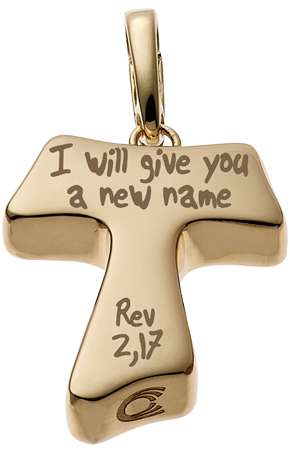 |

|
 |
In the Old Testament, the TAU is the mark made on the foreheads of those who are saved (Ezekiel 9:4). It is the last
letter of the Hebrew alphabet and as such had a strong symbolic meaning for the people of Israel, the same
significance as the last letter of the Greek alphabet, Omega, which Christ uses to introduce himself as the
end of everything in the Book of Revelations: “I am the Alpha and Omega, the First and the Last, the Beginning
and the End” (Rev. 22:13). That is why the TAU was a popular symbol among early Christians. Its shape represented the cross on which Christ would be crucified to save the world, and was therefore the sign of a new Life, brought by the Holy Spirit of the Risen Christ and given to Christians on the day of their baptism. Saint Francis of Assisi, whose life and work revolved around his strong devotion to Christ, held this symbol dear for its similarity to the cross, adopting it as a standard in both his life as well as his deeds. ù St. Francis signed his name with the TAU whenever he sent a letter and used TAU gesture of outstretched arms to begin his work. |
 |
